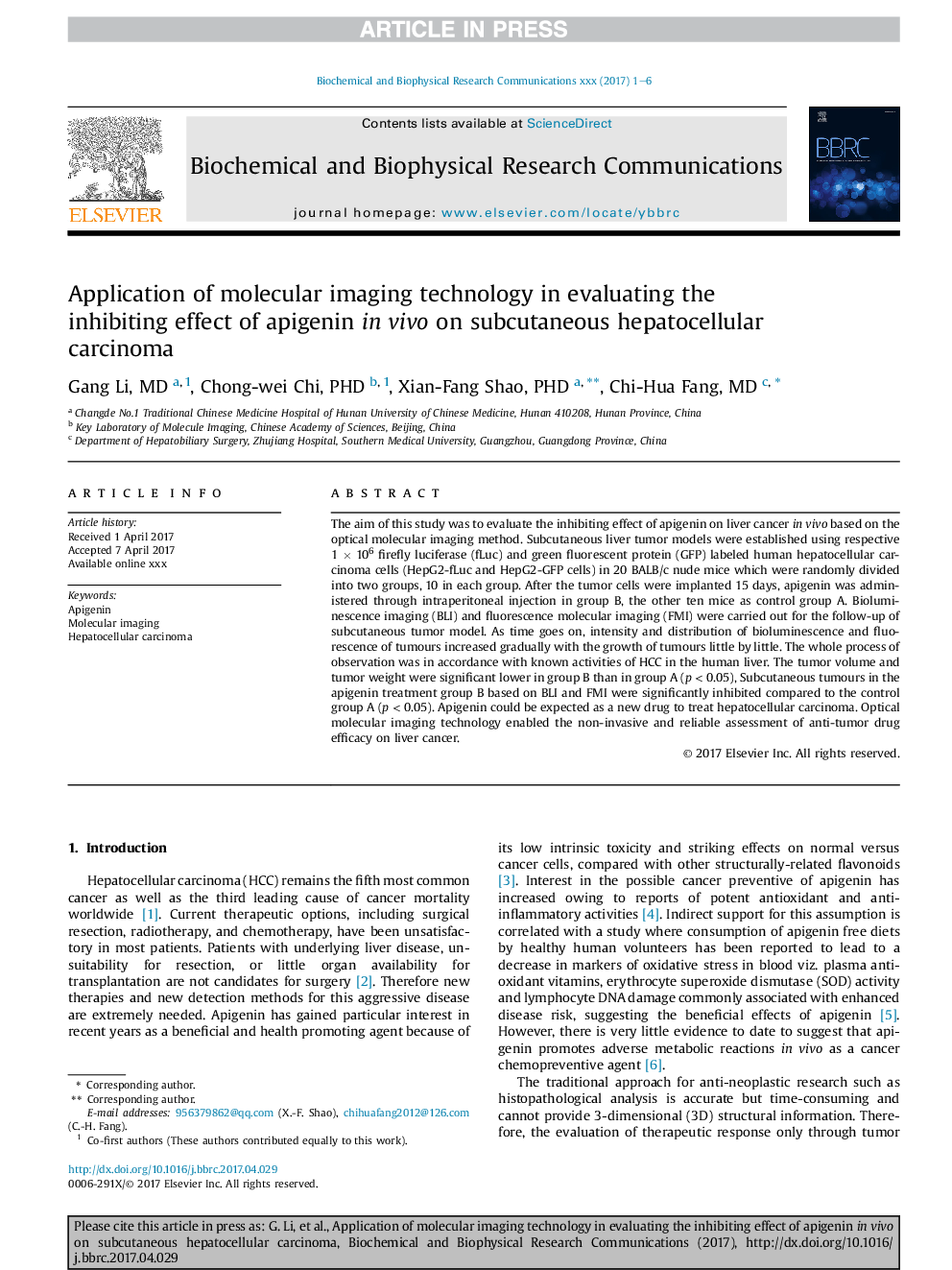| Article ID | Journal | Published Year | Pages | File Type |
|---|---|---|---|---|
| 5505754 | Biochemical and Biophysical Research Communications | 2017 | 6 Pages |
Abstract
The aim of this study was to evaluate the inhibiting effect of apigenin on liver cancer in vivo based on the optical molecular imaging method. Subcutaneous liver tumor models were established using respective 1 Ã 106 firefly luciferase (fLuc) and green fluorescent protein (GFP) labeled human hepatocellular carcinoma cells (HepG2-fLuc and HepG2-GFP cells) in 20 BALB/c nude mice which were randomly divided into two groups, 10 in each group. After the tumor cells were implanted 15 days, apigenin was administered through intraperitoneal injection in group B, the other ten mice as control group A. Bioluminescence imaging (BLI) and fluorescence molecular imaging (FMI) were carried out for the follow-up of subcutaneous tumor model. As time goes on, intensity and distribution of bioluminescence and fluorescence of tumours increased gradually with the growth of tumours little by little. The whole process of observation was in accordance with known activities of HCC in the human liver. The tumor volume and tumor weight were significant lower in group B than in group A (p < 0.05), Subcutaneous tumours in the apigenin treatment group B based on BLI and FMI were significantly inhibited compared to the control group A (p < 0.05). Apigenin could be expected as a new drug to treat hepatocellular carcinoma. Optical molecular imaging technology enabled the non-invasive and reliable assessment of anti-tumor drug efficacy on liver cancer.
Related Topics
Life Sciences
Biochemistry, Genetics and Molecular Biology
Biochemistry
Authors
Gang MD, Chong-wei PHD, Xian-Fang PHD, Chi-Hua MD,
